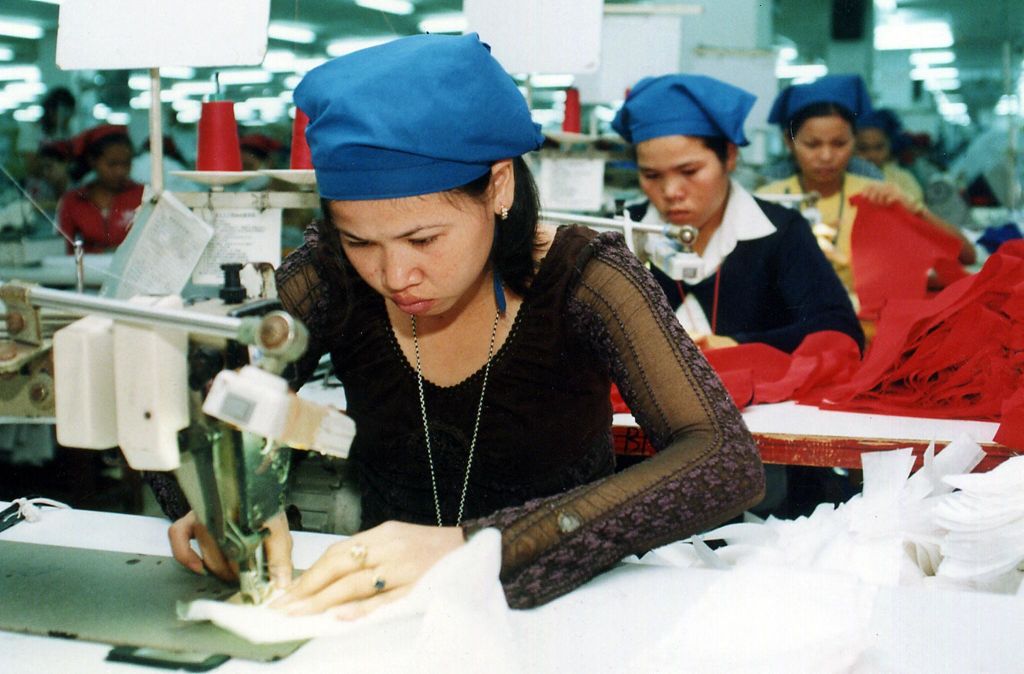In January, I traveled to Phnom Penh, Cambodia’s capital, to report on how climate change is impacting the lives of the country’s garment workers. Sitting in the back of a tuk tuk, hot air blowing on my face, I took a screenshot of the temperature on my iPhone: 89.6°F. Although the Southeast Asian country is known for its tropical climate, January is meant to be one of the cooler months.
After several hours, the heat made it difficult to concentrate fully. But I could always take a break. For the country’s nearly one million garment workers – the majority of whom are women – this isn’t so easy. In interviews, they told me soaring temperatures inside factories impact their productivity. They often feel ill or faint, while managers become verbally abusive when they miss hourly targets due to the heat.
“We need more oxygen,” Leakhena, a seamstress, told me. “I cannot breathe properly.”
We know that fashion has had a devastating impact on the planet, producing more greenhouse gas emissions than aviation and shipping combined. But I wanted to dig into how climate change is impacting workers in the $2.5 trillion industry.
To do this, we looked at three key points in fashion’s global supply chain, from India’s cotton farmers, who produce the very fibers needed to make our T-shirts, to Cambodia’s garment factories and Ghana’s Kantamanto — one of the world’s largest second-hand markets, where clothing discarded by Western consumers is resold. Each step of the way, we found a largely female workforce suffering from climate change-related issues, such as extreme heat or flooding.
Journalist Snigdha Poonam traveled to Gujarat, on India’s western coast, where she found women picking cotton in sun-baked fields in temperatures of roughly 113°F.
“The heat makes our skin itch,” Jessuben Jhapra, a farmer, told her. “Heat rash can erupt all over the body.”
At the very end of the chain, environment journalist Albert Oppong-Ansah, based in Ghana, spoke with young women who transport bales of clothing around Kantamanto. They play a crucial link in the second-hand supply chain but lose vital wages when flooding prevents trade. We tracked several brands across each country, including Walmart, Gap, Old Navy, Primark and H&M.
As global temperatures soar, with 2023 the hottest year on record, the once under-explored link between climate change and labor is fast becoming an urgent issue. Unless extreme heat and flooding are addressed, countries vital for fashion production, including Cambodia, risk losing $65 billion in export earnings and one million potential jobs by 2030, according to Cornell University in New York.
The issue isn’t confined to workplaces either. At least not in Phnom Penh, where I chatted with women in their homes after their shifts ended. Often single-bedroom dwellings with low, metal roofs, there is little protection against extreme weather. Small fans simply blew out warm air. Several described them as unlivable in the hotter months.
“I want to see change,” said Leakhena. “The heat is making us more exhausted every day. We don’t know what impact it will have on our health after five or 10 years. And by that point, it’s already too late.
Read the full story here.



